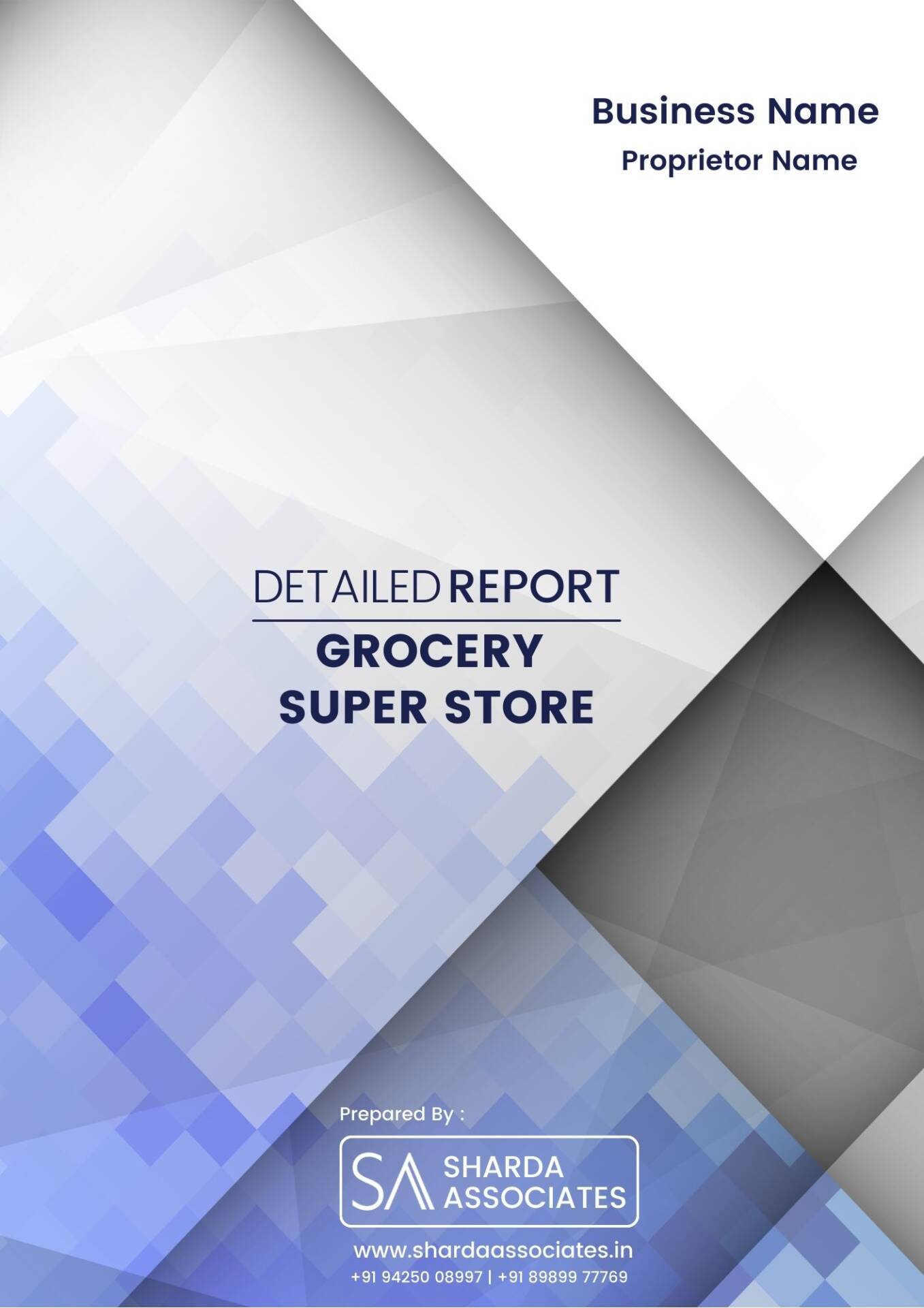Detailed Report On Grocery Super Store
A Grocery Super Store is a large retail establishment offering diverse groceries, fresh produce, household essentials, and more. It aims to provide one-stop shopping convenience for everyday needs and consumer preferences.
Introduction
Detailed Report on Grocery Super Store is as follows.
A grocer’s shop may be referred to as a supermarket or grocery store. Sugar, flour, and canned foods are examples of groceries that may be purchased at a supermarket or grocery store. A grocery store, often known as a supermarket, is a type of food and beverage retail outlet that sells a broad variety of fresh or packaged food goods. The phrase “grocery store” solely applies to supermarkets; it does not apply to other sorts of grocery-selling enterprises.
A supermarket is a type of retail store that sells a broad variety of things, particularly food. Supermarkets and hypermarkets, which are bigger grocery stores, usually stock a broad variety of non-food products such as clothing and everyday necessities. Small stores specializing in fruits and vegetables.


Following department shops, supermarkets are the other main retailing establishments. This all started in the United States of America. Supermarkets originally appeared during the Great Depression of the 1930s. Supermarkets were originally designed and operated largely to sell food, such as fruits and vegetables, meat, fish, and dairy products. Non-food items sold at today’s supermarkets include handkerchiefs, soap, dolls, cosmetics, home products, and electronic goods.
Detailed Report Sample On Grocery Super Store



Market Potential Of Grocery Super Store
The worldwide food and grocery retail business is forecast to be worth USD 11,324.4 billion in 2021, and it is expected to grow at a 3.0% CAGR from 2022 to 2030.
The increase in growth can be primarily ascribed to consumer polarization, higher grocery expenditure brought on by COVID-19 lockout, and increasing online grocery sales volume. Consumer polarization emerged as a result of the pandemic, with some customers increasing their spending to buy luxury goods. The increased domestic cooking caused by the epidemic has also been a significant growth factor for the business. The food and grocery retail sector has been impacted by the COVID-19 outbreak.
Omnichannel mass merchandisers have accelerated the digitalization of the supermarket business. The integrated omnichannel tactics have spawned market developments that are unprecedented. Amazon’s acquisition strategy for brick-and-mortar enterprises to integrate e-commerce with physical stores has intensified this trend. Amazon’s acquisition of Whole Foods cemented its position as a major player in the grocery sector. As a consequence of this acquisition, Amazon was able to connect Amazon.com with Whole Foods, providing a variety of delivery possibilities as well as other advantages of online food shopping. The development of new distribution mechanisms has also spurred market expansion.
Contents of Project Report
A project report helps you identify whether a project is worth pursuing. It presents the holistic view and brings complete insight of the business and its activity.
It acts as a guide for all the business operations, aids in taking all financial decisions related to the existing businesses and to the start-ups. It serves as roadmap to the business and provides information to the outsider who are wanting to know more about the business.
You will have the opportunity to build new goals and expansion ideas in one single document. Everyone, from the banks to potential investors, will need to have a look at the project report before they shell out any money.
A well drafted project report generally consists details about:
- Brief History of the Business
- The Promoters
- SWOT Analysis
- Industry Outlook
- Past Financial Statements
- Projected Financial Statements
- Infrastructure and Human Resource required
- CMA data
- Business model
- Requirement of Working Capital Funds
- Means of Finance
Other relevant information, if any.
